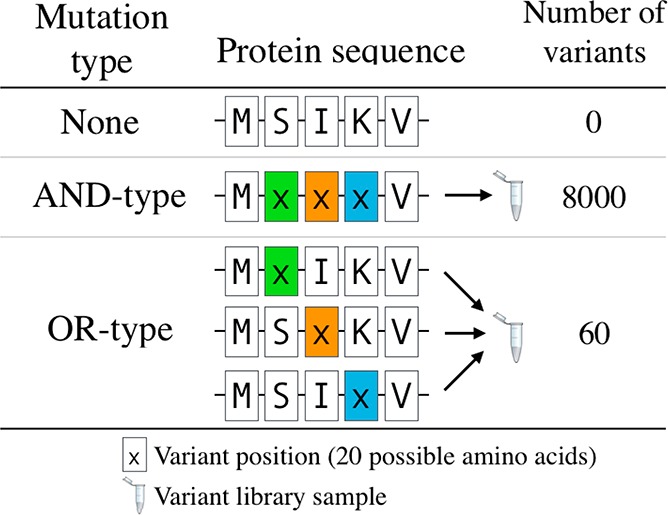Figure 1.

An example of OR-type mutations. When randomizing multiple amino acids (here residues “SIK”, 20 possible amino acids for each position), conventional approaches mutated each residue simultaneously. This “AND-type” mutagenesis approach creates large numbers of variants, as the impact of each position is multiplicative (20 × 20 × 20 = 8000). In contrast, OR-type libraries can randomize any one of these same amino acids, but not all together. In this example the impact of each position is additive (20 + 20 + 20 = 60), thus significantly reducing the size and complexity of the variant library. From another perspective, this OR-type approach is simplifying the generation of multiple libraries by synthesizing three different randomized libraries in one tube.
